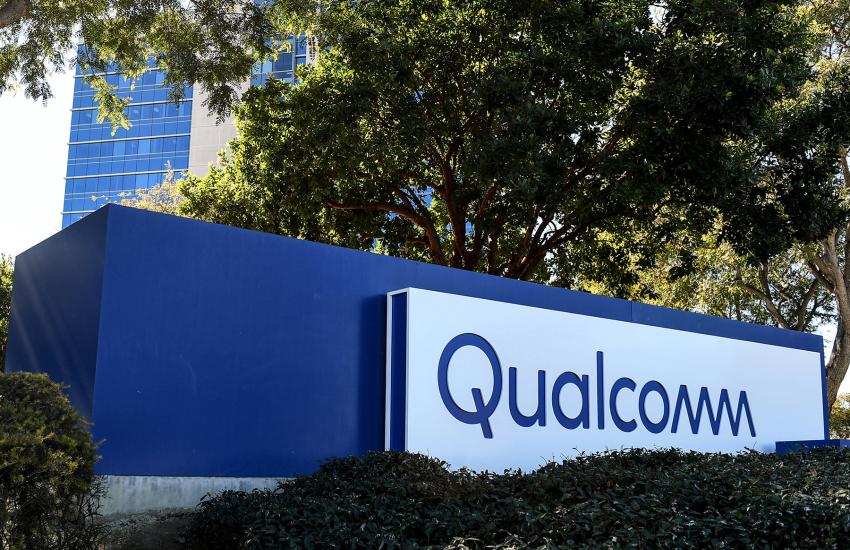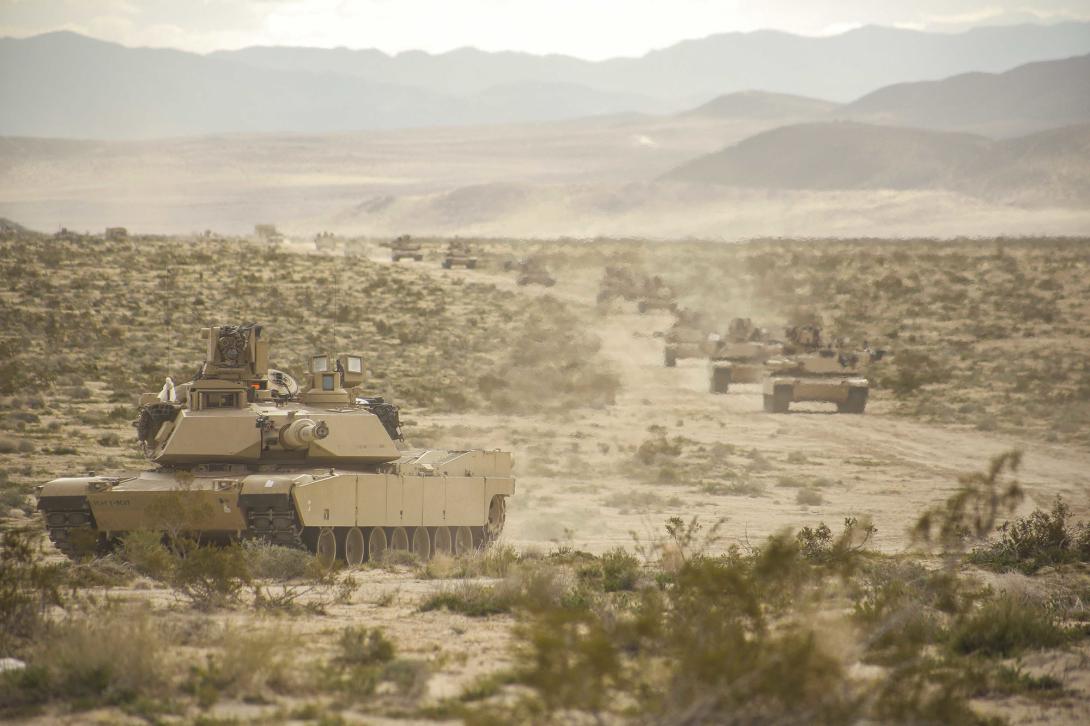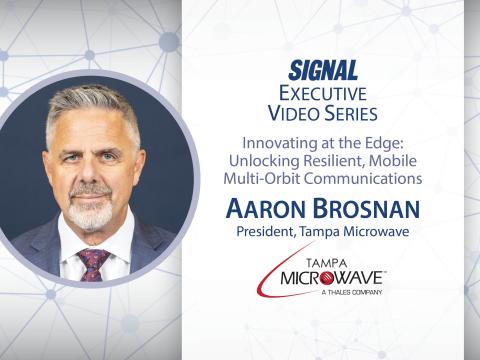Industry Developing Direct-to-Device Comms for Warfighters and First Responders
For first responders and warfighters, reliable communication is paramount in moments of crisis. 5G sidelink, a new radio standard technology, offers direct-to-device (D2D) communication without relying on traditional cellular network infrastructures or base stations. One company, Qualcomm, is investing in ongoing research for its sidelink capability, with a phase one prototype due to launch at the beginning of next year.
Sidelink is a 3rd Generation Partnership Project (3GPP) radio standard technology. Originating in the 12th and 13th 3GPP releases, sidelink capability was commercialized in releases 14 and 15 through vehicular communication technologies, with the 16th release introducing 5G new radio standards. Subsequent 3GPP releases have allowed for more advanced evolution of D2D technology to meet mission-critical use cases.
For Qualcomm, its sidelink prototype modules will undergo testing and evaluation for updates and modifications throughout the year. “These will not be commercially available and are for evaluation only,” said Ken Davis, vice president of business development and sales at Qualcomm Government.
“5G sidelink builds on proximity services and delivers ultra-reliable, low-latency communication with extended range through multi-hop relays, covering several kilometers,” Davis wrote in an email to SIGNAL Media.
A cornerstone of the technology, he noted, is its interoperability.
“D2D communication enables multiple agencies with disparate networks—such as police, fire and emergency medical services from different jurisdictions—to coordinate directly in real time,” he said.
“The mesh capability can be leveraged where a traditional MANET [mobile ad hoc network] is not present,” Davis explained. “Sidelink can be applied in mounted, dismounted and aerial solutions and is intended to be vendor agnostic.”
Qualcomm’s sidelink evolution has been an ongoing process, and its collaboration with academic institutions, like Texas A&M, has enabled advancement and training.
Speaking futuristically, Walt Magnussen said Qualcomm’s chipsets could be deployed in hand-held cellphone devices for critical communications. Magnussen has directed Texas A&M’s Internet2 Technology Evaluation Center for more than 20 years. “If you think about it in land mobile radio, in narrowband communications, you’ve got talk around, where you basically go into a simplest channel and two radios can talk to each other if they can’t communicate with the repeaters. Sidelink is the cellular equivalent of that,” he told SIGNAL Media in an interview.
Everything related to sidelink is software due to the chipsets’ underlying frequencies, he explained. However, there are three major differentiating elements between sidelink and land mobile radio communications, or LMR, which are most beneficial for talking.
“The functional equivalence of that and sidelink in broadband is mission-critical push-to-talk, but there’s also mission-critical video and the mission-critical data element that are defined separately and prioritized separately for mission-critical voice,” Magnussen said.
“It also has two or three other expanded capabilities that are very, very exciting,” he said.
One of those is that sidelink automatically enables a mesh network. “With the protocols set up, I can go device to device to device, device to network.”
If one of the devices has a satellite connection, for example, then the other devices can also get internet connection through the network.
“Utilizing direction of communications coming and time of arrival information coming in, I can also do some pretty accurate navigation on the system as well, so if there are four other people that are within my small working area, I know where they are,” Magnussen continued.
Another sidelink advantage is its timing capability in the event that a system gets jammed.
“If I’m dealing with simulcast, jamming can pretty much knock the LMR communications out of business completely. With sidelink, what ends up happening is if I jam GPS, the last device to have a GPS connection kind of raises its hand to say, ‘Hey, I’ve got timing,’” Magnussen explained further. While the timing will only be maintained for a certain period of time, it will be established and provided to other devices for a coordinated and synchronized cluster.
Sidelink’s D2D capabilities could be beneficial for the U.S. military, specifically for the Army’s Human Machine Integrated Formations program, Magnussen mentioned. The program is an initiative to integrate robotic and autonomous systems for critical warfighting needs.
“For example, one of the technologies they’re looking at is, do I really need to have a tank crew in two different tanks if one tank group could control two different tanks,” Magnussen explained. “With the caravanning, in essence, you have the ability to bring out multiple vehicles and have one vehicle manage the overall route, but then all the other vehicles use [D2D] to really connect.” The technology would reduce the risk to human life, he added.
The automotive industry is also benefiting from D2D technology for its vehicle-to-vehicle communications, also known as V2V. Although V2V technologies resemble those of sidelink, they are currently limited to using 3GPP’s 14th release, whereas the defense industry is working on release 17 and soon 19, Magnussen said. His team is also working with the Department of Transportation for a V2V test bed, a grant worth $22 million, he said.
“Some of the stuff we’ll be testing out in the original prototype units we’ll be getting from Qualcomm will be ground-to-ground, ground-to-air and air-to-air,” Magnussen explained. Sidelink, however, will never be the primary method of communication as the network takes precedence.
“In defense and public safety, we have this concept called base primary, alternate, contingency and emergency. ... In my mind, sidelink is always going to be the E in PACE; it’s going to be the last method that I have to use. But again, if I’ve got 15 or 20 first responders or soldiers that are working together and they’ve lost all of their communications, they can still communicate with each other, and in more cases than not, that’s enough to protect life or property,” Magnussen stated.


Additionally, sidelink capabilities are being extensively evaluated in Europe, Magnussen noted, as the process of eventually eliminating TETRA is ongoing. TETRA, which stands for Terrestrial Trunked Radio, is a digital radio network created within the European Telecommunications Standards Institute’s standard for government and military agencies and emergency response services.
“They’re having to transition their voice services over to broadband, and if they don’t have sidelink, then they really don’t have talk arounds, and that really becomes an issue for first responders,” Magnussen said.
D2D has also drawn the attention of multiple private sector companies, such as Germantown, Maryland-based Hughes Network Systems, an EchoStar subsidiary. The company has been supporting and promoting the 3GPP industry standards that allow conventional smartphones to roam seamlessly between terrestrial cellular networks and space-based systems.
The notion of mobile satellite communication, from handsets to satellites, has been around for a long time, said David Zufall, a vice president at Hughes, but the shift that came from the 3GPP organization’s development of the non-terrestrial network standards enabled a move away from depending 100% on systems with proprietary radio layers and specialized handsets.
“All of a sudden, the big change was that there was an opportunity to have standards-based handsets talk to the satellite,” Zufall said in a joint interview alongside his colleague Patrick Markus, vice president and general manager for Hughes Defense and Government Solutions.
In September, EchoStar announced that it was canceling a $1.3 billion contract with MDA Space Ltd., for a planned D2D, resilient, lower-latency satellite constellation. Instead, EchoStar pursued a $17 billion agreement with SpaceX to sell its full portfolio of AWS-4 (S-band) and 50 MHz H-block spectrum licenses to SpaceX—for cash and equity.
As part of the agreement, EchoStar’s Dish Network Boost Mobile customers will gain access to Starlink direct-to-cell services, Markus reported via email.
“The EchoStar transaction with SpaceX continues our legacy of putting the customer first,” Markus stated. “Combining the spectrum from EchoStar with the satellite and launch capabilities of SpaceX will realize direct-to-cell faster for consumers worldwide.”





Comments